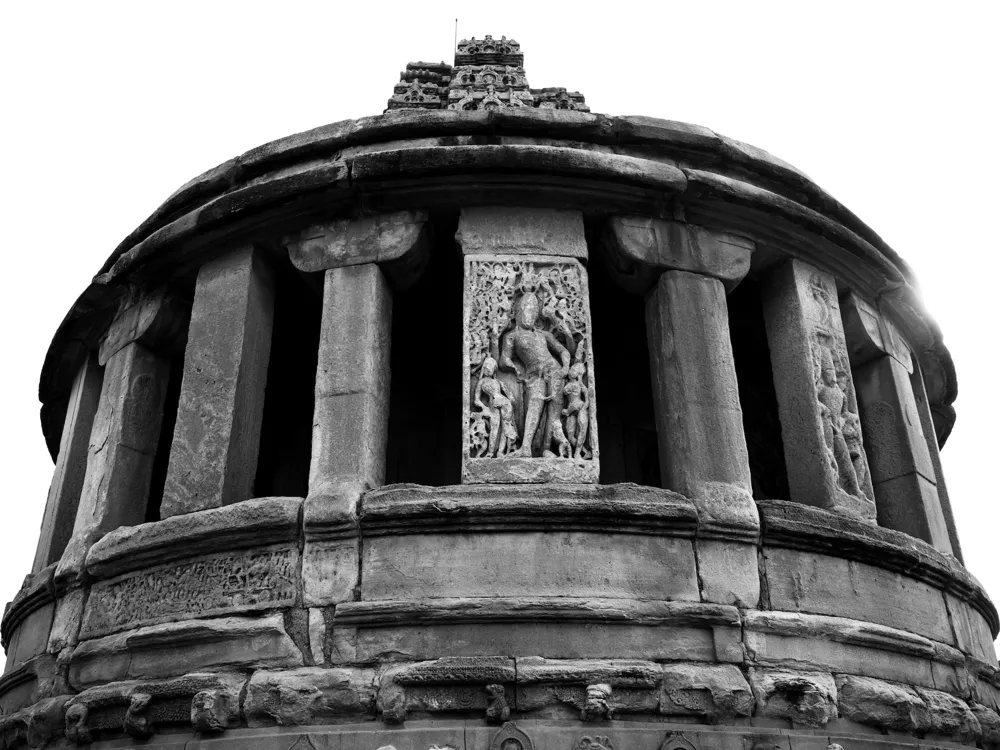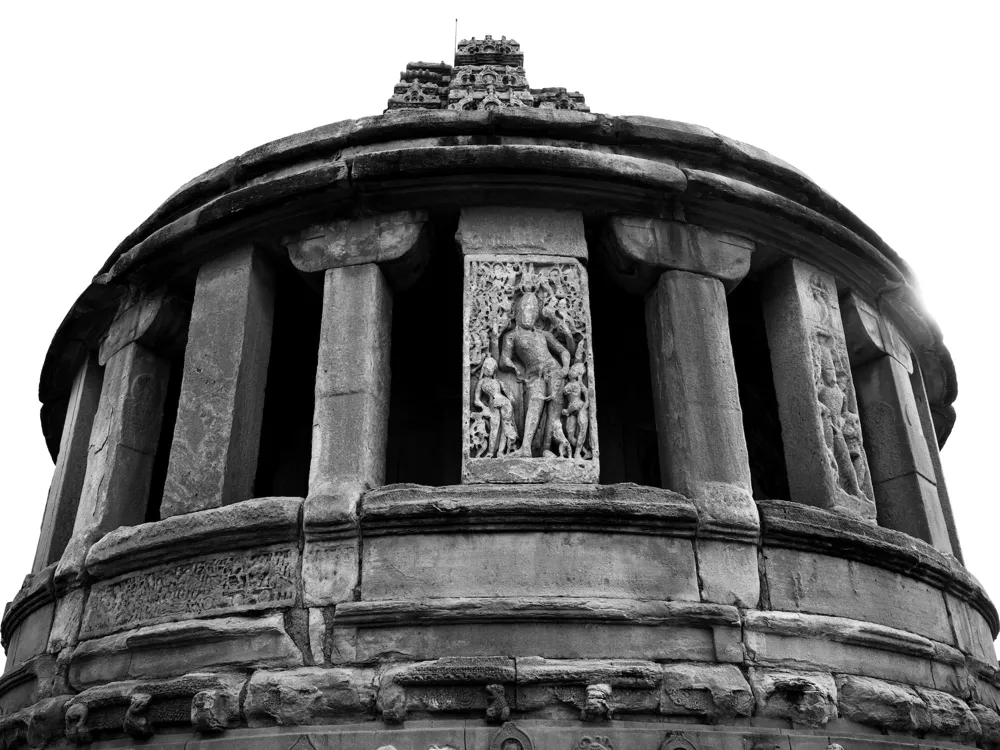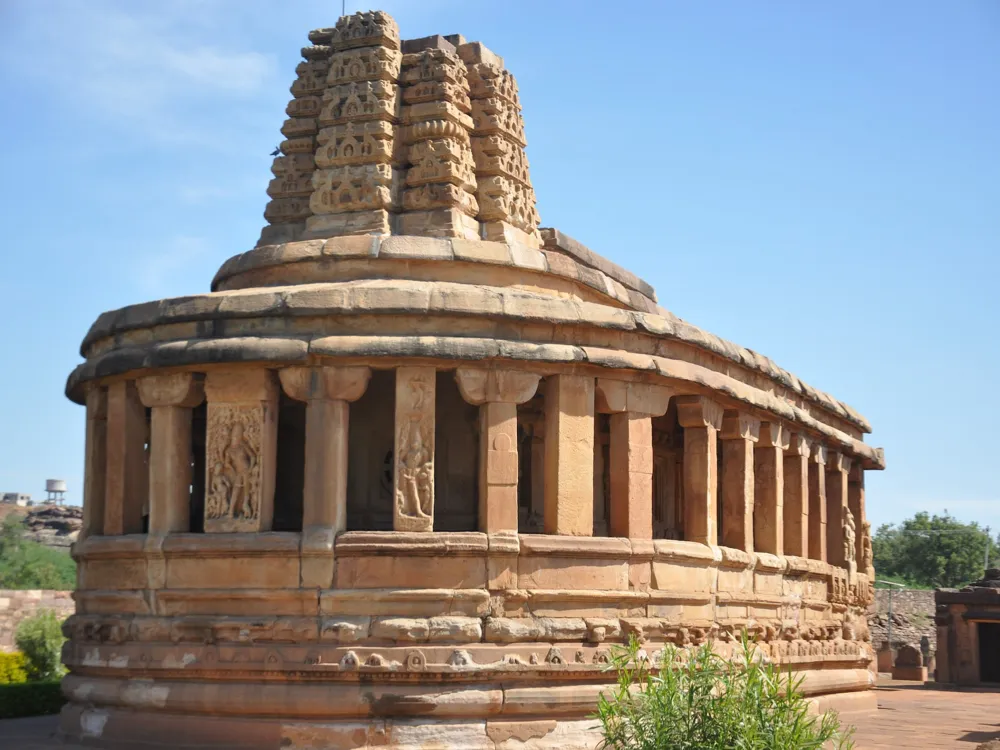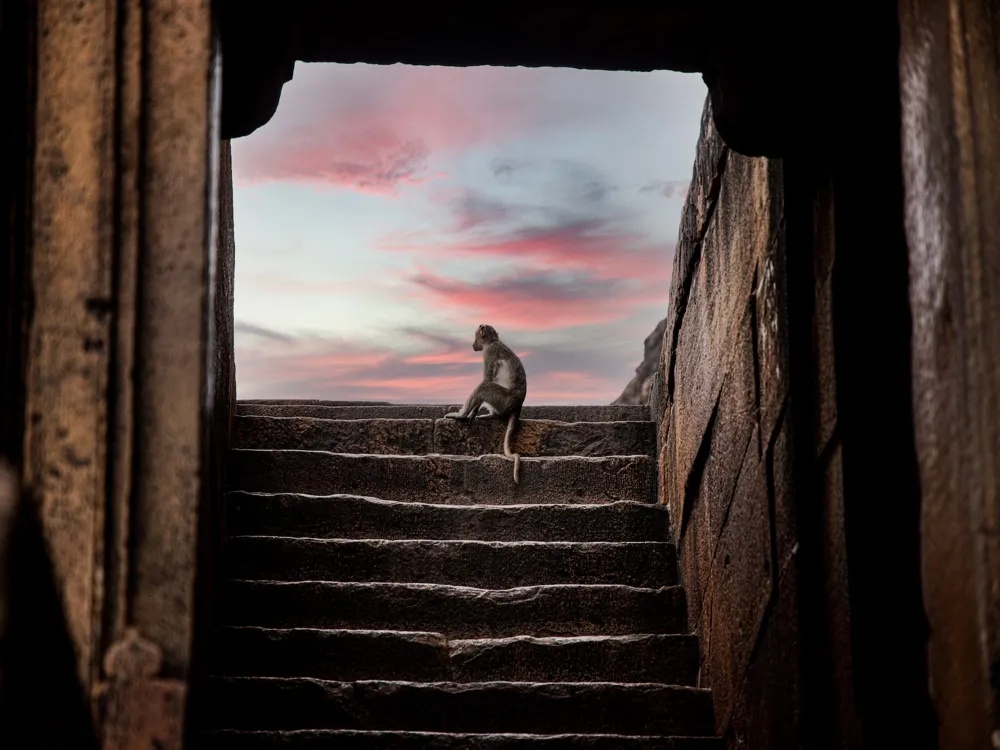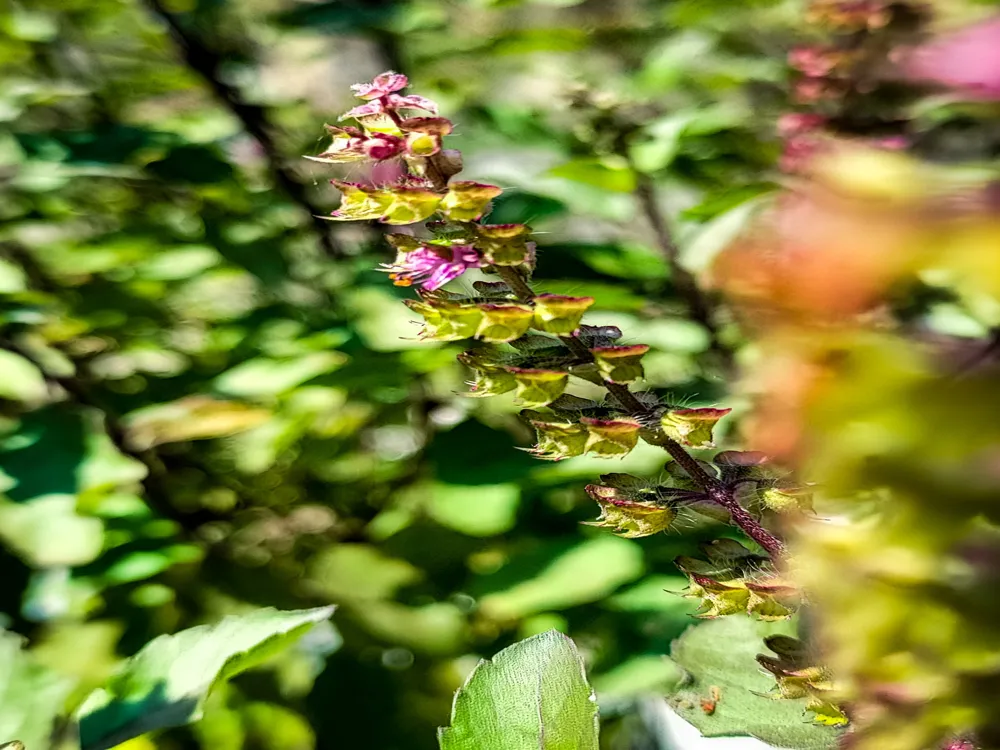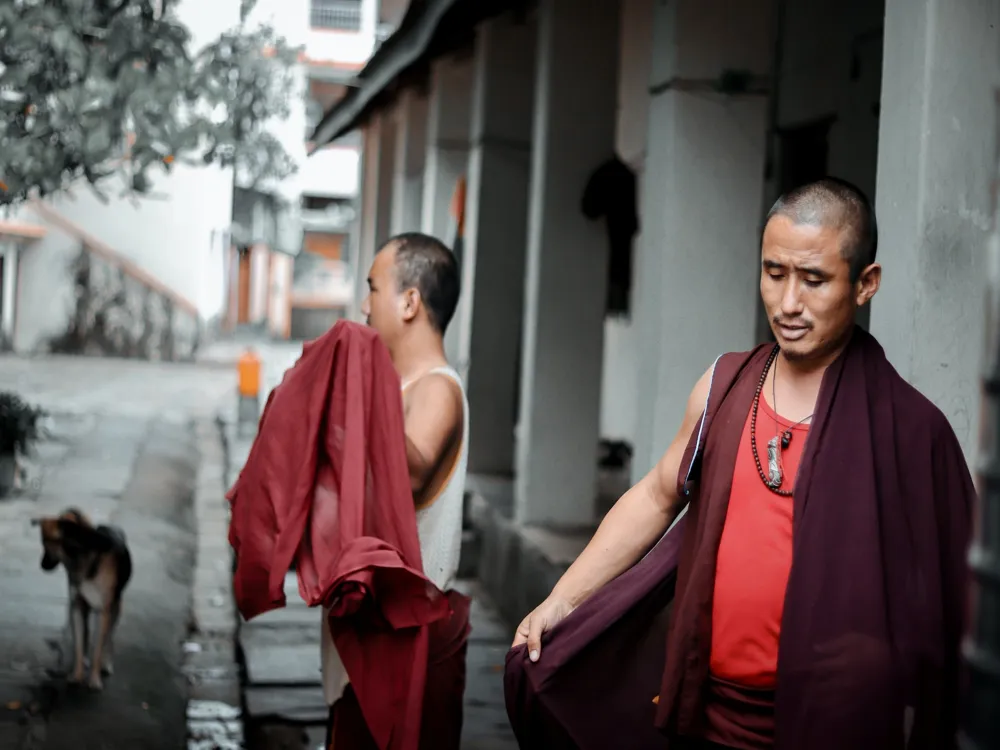The Jyotirlinga temples in Aihole, Karnataka, are not only a testament to spiritual significance but also a beacon of ancient Indian architecture. Nestled in the quaint town of Aihole, these temples form part of India's rich cultural and religious heritage. The term 'Jyotirlinga' literally means 'radiant sign of The Almighty' and is a unique representation of Lord Shiva. According to Hindu beliefs, there are twelve Jyotirlinga shrines in India, each holding a distinct place in devotees' hearts. Aihole, often referred to as the 'Cradle of Hindu Rock Architecture', houses some of these prestigious Jyotirlinga temples. This historic town was once the heart of the Chalukyan dynasty, renowned for its groundbreaking architectural styles that have influenced and shaped the design of Hindu temples across India. The Jyotirlinga temples in Aihole stand as a timeless witness to the architectural ingenuity of ancient Indian artisans and craftsmen. The journey to these temples is like stepping back in time. One can witness the seamless blend of mythology, spirituality, and architecture. The serene ambiance of Aihole, combined with the mystical charm of the Jyotirlinga temples, offers a tranquil retreat for both the mind and soul. These temples are not just places of worship but are profound cultural hubs, attracting historians, architects, and spiritual seekers from around the globe. The architecture of the Jyotirlinga temples in Aihole reflects a harmonious blend of various architectural styles that evolved over centuries. The Chalukyan style, predominant in these temples, is characterized by its intricate carvings, detailed iconography, and innovative structural designs. This style marked a significant departure from the traditional Nagara and Dravidian architectural styles that were prevalent in the northern and southern regions of India, respectively. The Jyotirlinga temples exhibit a unique fusion of these styles, creating a distinct architectural identity. The temples typically feature a sanctum sanctorum (Garbhagriha), a pillared hall (Mandapa), and sometimes an antechamber, each adorned with elaborate carvings and sculptures of Hindu deities, celestial beings, and mythological scenes. The intricate stonework and balanced proportions exemplify the advanced engineering and artistic skills of the time. The most striking aspect of these temples is the use of locally sourced sandstone, which gives the structures a warm, earthy hue. This choice of material not only adds to the aesthetic appeal but also reflects the builders' deep understanding of local resources and climatic conditions. The stone carvings, ranging from delicate floral patterns to fierce deities, demonstrate a high level of craftsmanship and attention to detail. Visitors to the Jyotirlinga temples should adhere to a modest dress code, respecting the sanctity of the place. Traditional Indian attire is recommended, but not mandatory. It's also important to maintain a quiet and respectful demeanor within the temple premises. Photography may be restricted in certain areas of the temples. Always look for signs indicating photography rules or ask temple authorities for permission before taking photos, especially inside the sanctum sanctorum. The ideal time to visit the Jyotirlinga temples in Aihole is from October to March when the weather is pleasant. This period avoids the harsh summer heat and the monsoon season, making it conducive for exploration and sightseeing. The Jyotirlinga temples in Aihole are well-connected by road and are accessible from various parts of Karnataka. The nearest major city is Hubli, which is well connected by air, rail, and road. From Hubli, one can hire a taxi or take a bus to Aihole, which is approximately 140 kilometers away. For those traveling by train, the nearest railway station is Bagalkot, from where Aihole is about 35 kilometers. Local buses, taxis, and auto-rickshaws are readily available from Bagalkot to Aihole. For international tourists, the nearest airport is the Kempegowda International Airport in Bengaluru. From Bengaluru, one can take a flight to Hubli or opt for a train or bus journey to reach Aihole. It's advisable to plan the journey in advance and check for the availability of transportation options, especially during peak tourist seasons and religious festivals. Read More:Overview of Jyotirlinga Temples in Aihole, Karnataka
Architecture of Jyotirlinga Temples
Tips When Visiting Jyotirlinga Temples
Dress Code and Conduct
Photography Guidelines
Best Time to Visit
How to Reach Jyotirlinga Temples
Jyothirlinga Temples
Aihole
Karnataka
NaN onwards
View aihole Packages
Also Refered As:
Shivalinga Temple Complex
Aihole Travel Packages
View All Packages For Aihole
Top Hotel Collections for Aihole

Private Pool

Luxury Hotels

5-Star Hotels

Pet Friendly
Top Hotels Near Aihole
Other Top Ranking Places In Aihole
View All Places To Visit In aihole
Faq on Aihole
What are Jyotirlinga temples in Aihole?
The Jyotirlinga temples in Aihole are ancient Hindu temples dedicated to Lord Shiva, considered as manifestations of the divine lingam (symbol) of Lord Shiva.
How many Jyotirlinga temples are there in Aihole?
There are traditionally believed to be twelve Jyotirlinga temples in Aihole, each representing a different aspect of Lord Shiva's power and presence.
What is the significance of Jyotirlinga temples?
Jyotirlinga temples hold great significance in Hinduism as they are believed to be powerful spiritual centers where devotees can connect with Lord Shiva's divine energy and seek blessings.
What makes Aihole a significant location for Jyotirlinga temples?
Aihole is historically significant for its rich heritage of Hindu temples, including the Jyotirlinga temples, which are revered by devotees and scholars alike for their architectural beauty and spiritual importance.
Are the Jyotirlinga temples in Aihole open to visitors?
Yes, the Jyotirlinga temples in Aihole are open to visitors, allowing devotees and tourists to explore their intricate architecture, learn about their religious significance, and participate in prayers and rituals.
View aihole Packages
Shivalinga Temple Complex
Aihole Travel Packages
View All Packages For Aihole
Top Hotel Collections for Aihole

Private Pool

Luxury Hotels

5-Star Hotels

Pet Friendly
Top Hotels Near Aihole
Other Top Ranking Places In Aihole
Faq on Aihole
What are Jyotirlinga temples in Aihole?
The Jyotirlinga temples in Aihole are ancient Hindu temples dedicated to Lord Shiva, considered as manifestations of the divine lingam (symbol) of Lord Shiva.
How many Jyotirlinga temples are there in Aihole?
There are traditionally believed to be twelve Jyotirlinga temples in Aihole, each representing a different aspect of Lord Shiva's power and presence.
What is the significance of Jyotirlinga temples?
Jyotirlinga temples hold great significance in Hinduism as they are believed to be powerful spiritual centers where devotees can connect with Lord Shiva's divine energy and seek blessings.
What makes Aihole a significant location for Jyotirlinga temples?
Aihole is historically significant for its rich heritage of Hindu temples, including the Jyotirlinga temples, which are revered by devotees and scholars alike for their architectural beauty and spiritual importance.
Are the Jyotirlinga temples in Aihole open to visitors?
Yes, the Jyotirlinga temples in Aihole are open to visitors, allowing devotees and tourists to explore their intricate architecture, learn about their religious significance, and participate in prayers and rituals.








